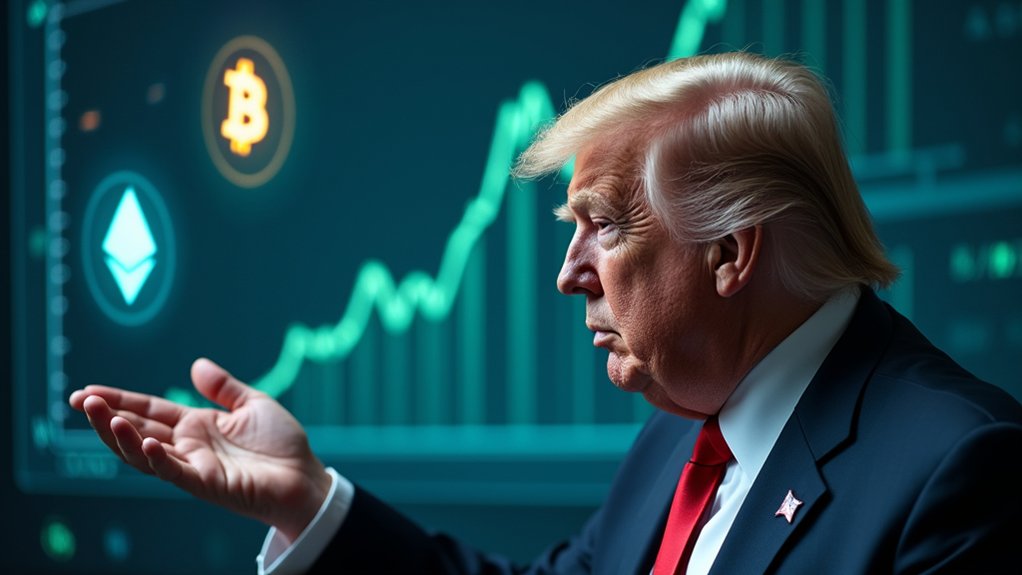How quickly the regulatory pendulum swings when a new administration takes the helm.
The regulatory tides shift with alarming velocity as power transfers from one administration to the next.
President Trump’s January 23rd executive order—grandiosely titled “Strengthening American Leadership in Digital Financial Technology”—has effectively redrawn the cryptocurrency regulatory landscape overnight, sweeping aside Biden-era frameworks with characteristic decisiveness.
The establishment of a Presidential Working Group under venture capitalist David Sacks signals more than mere administrative reshuffling; it represents a fundamental philosophical pivot in America’s approach to digital assets.
The CFTC—historically relegated to derivatives oversight while the SEC commanded headlines—now finds itself elevated to cryptocurrency’s primary regulatory steward. The shift aligns closely with bipartisan legislation like FIT21 bill that classifies crypto as a commodity. The nomination of Brian Quintenz, a former CFTC Commissioner with pro-crypto views, further solidifies this power shift.
This jurisdictional rebalancing (one hesitates to call it a coup) portends significant shifts in enforcement priorities, with the agency’s traditionally lighter touch replacing the SEC’s more aggressive posture.
Market participants who previously navigated a labyrinth of overlapping authorities may soon operate under clearer boundaries, though whether clarity translates to responsible oversight remains an open question.
Perhaps most striking among the administration’s initiatives is the proposed national cryptocurrency stockpile derived from lawfully seized assets.
This peculiar approach to building sovereign digital reserves—essentially converting enforcement actions into national treasure—represents innovative fiscal thinking, if not somewhat unorthodox reserve management strategy.
The anti-CBDC stance embedded within the order aligns neatly with decentralization advocates’ preferences while simultaneously creating potential friction with nations already advancing central bank digital currencies.
This position, coupled with the Working Group’s 180-day deadline for legislative recommendations, suggests an accelerated timeline for regulatory transformation that may outpace careful consideration of systemic risks.
For crypto entrepreneurs, the implied promise of reduced enforcement risks and streamlined approvals represents welcome relief after years of regulatory uncertainty. The CFTC’s oversight would extend to futures-based ETFs which already operate under their regulatory umbrella and have provided standardized trading environments for crypto derivatives since 2021.
Yet beneath these industry-friendly adjustments lies a more ambitious geopolitical calculation: positioning America to dominate blockchain innovation through regulatory neutrality rather than restriction.
Whether this approach ultimately strengthens or undermines America’s financial stability depends entirely on the execution details—which, appropriately enough, remain as cryptic as the technology itself.









